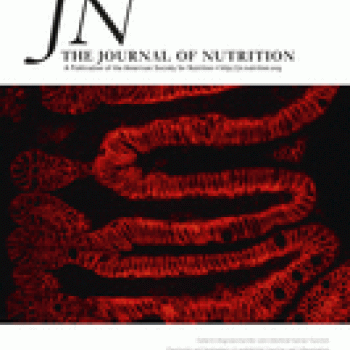Publication Information

Article using Young Lives data from UK Data Archive along with Government of India data by researchers from the Public Health Foundation of India, London School of Hygiene and Tropical Medicine, Stanford University (Department of Medicine) and University of Oxford (Department of Sociology)
Background: Global food prices have risen sharply since 2007. The impact of food price spikes on the risk of malnutrition in children is not well understood.
Objective: We investigated the associations between food price spikes and childhood malnutrition in Andhra Pradesh, one of India's largest states, with >85 million people. Because wasting (thinness) indicates in most cases a recent and severe process of weight loss that is often associated with acute food shortage, we tested the hypothesis that the escalating prices of rice, legumes, eggs, and other staples of Indian diets significantly increased the risk of wasting (weight-for-height z scores) in children.
Methods: We studied periods before (2006) and directly after (2009) Indias food price spikes with the use of the Young Lives longitudinal cohort of 1918 children in Andhra Pradesh linked to food price data from the National Sample Survey Office. Two-stage least squares instrumental variable models assessed the relation of food price changes to food consumption and wasting prevalence (weight-for-height z scores).
Results: Before the 2007 food price spike,wasting prevalence fell from 19.4% in 2002 to 18.8% in 2006. Coinciding with India's escalating food prices, wasting increased significantly to 28.0% in 2009. These increases were concentrated among low- (x2: 21.6, P < 0.001) andmiddle- (x2: 25.9, P < 0.001) income groups, but not among high-income groups (x2: 3.08, P = 0.079). Each 10.0 rupee ($0.170) increase in the price of rice/kg was associated with a drop in child-level rice consumption of 73.0 g/d (b: 27.30; 95% CI: 210.5, 23.90). Correspondingly, lower rice consumption was significantly associated with lower weight-for-height z scores (i.e., wasting) by 0.005 (95% CI: 0.001, 0.008), as seen with most other food categories.
Conclusion: Rising food prices were associated with an increased risk of malnutrition among children in India. Policies to help ensure the affordability of food in the context of economic growth are likely critical for promoting children's nutrition.
Keywords: food price spikes; food consumption; weight-for-height z scores; child nutrition; India
Available on the journal website.
Read more on the University of Oxford website

Article using Young Lives data from UK Data Archive along with Government of India data by researchers from the Public Health Foundation of India, London School of Hygiene and Tropical Medicine, Stanford University (Department of Medicine) and University of Oxford (Department of Sociology)
Background: Global food prices have risen sharply since 2007. The impact of food price spikes on the risk of malnutrition in children is not well understood.
Objective: We investigated the associations between food price spikes and childhood malnutrition in Andhra Pradesh, one of India's largest states, with >85 million people. Because wasting (thinness) indicates in most cases a recent and severe process of weight loss that is often associated with acute food shortage, we tested the hypothesis that the escalating prices of rice, legumes, eggs, and other staples of Indian diets significantly increased the risk of wasting (weight-for-height z scores) in children.
Methods: We studied periods before (2006) and directly after (2009) Indias food price spikes with the use of the Young Lives longitudinal cohort of 1918 children in Andhra Pradesh linked to food price data from the National Sample Survey Office. Two-stage least squares instrumental variable models assessed the relation of food price changes to food consumption and wasting prevalence (weight-for-height z scores).
Results: Before the 2007 food price spike,wasting prevalence fell from 19.4% in 2002 to 18.8% in 2006. Coinciding with India's escalating food prices, wasting increased significantly to 28.0% in 2009. These increases were concentrated among low- (x2: 21.6, P < 0.001) andmiddle- (x2: 25.9, P < 0.001) income groups, but not among high-income groups (x2: 3.08, P = 0.079). Each 10.0 rupee ($0.170) increase in the price of rice/kg was associated with a drop in child-level rice consumption of 73.0 g/d (b: 27.30; 95% CI: 210.5, 23.90). Correspondingly, lower rice consumption was significantly associated with lower weight-for-height z scores (i.e., wasting) by 0.005 (95% CI: 0.001, 0.008), as seen with most other food categories.
Conclusion: Rising food prices were associated with an increased risk of malnutrition among children in India. Policies to help ensure the affordability of food in the context of economic growth are likely critical for promoting children's nutrition.
Keywords: food price spikes; food consumption; weight-for-height z scores; child nutrition; India
Available on the journal website.
Read more on the University of Oxford website

